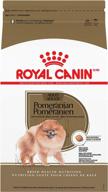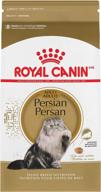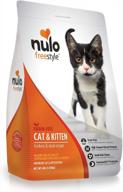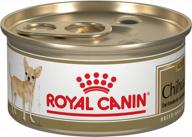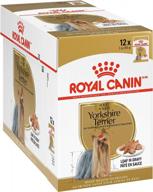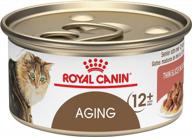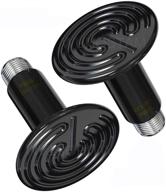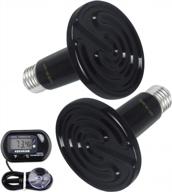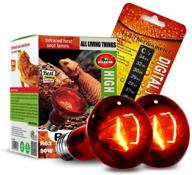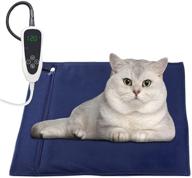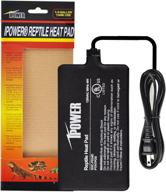Another interesting products
Keeping Your Reptile Happy and Healthy
Providing the proper environment for your reptile is key to keeping them healthy and thriving. This means setting up their habitat with the right temperature ranges, humidity levels, lighting, and more. Here are some tips on meeting your reptile's care needs.
Similar products
Choosing the Right Heat Source
Reptiles are ectothermic, meaning they rely on external heat sources to regulate their body temperature. The heat source you choose depends on the specific species of reptile you have.
- For arboreal species like chameleons, an incandescent or ceramic heat lamp works well. This replicates the heat they would get from the sun in the wild.
- For desert species, consider a ceramic heat emitter which produces ambient air heat without light.
- For tropical species, an under tank heater or heat mat provides belly heat to aid digestion.
Getting the Temperature Just Right
You need to create a thermal gradient in your reptile's habitat with a warm side and a cooler side so they can self-regulate. Follow these tips:
- Place a digital thermometer with a probe on both the warm and cool sides.
- Aim for the following temperature ranges during the day:
- Basking spot: 85-105°F
- Warm side: 80-90°F
- Cool side: 70-80°F
- Lower temperatures by 5-10° at night.
Positioning the Heat Source Properly
Where you place the heat source in the enclosure is important. Here are some guidelines:
| Heat Source | Placement Tips |
|---|---|
| Heat lamp | Position over a basking area, not too close to the substrate. |
| Under tank heater | Adhere to the bottom of one side of the tank. |
| Ceramic heat emitter | Hang from the middle of the enclosure. |
Using a Thermostat for Precise Control
A thermostat is crucial for regulating heat sources and preventing dangerous temperature spikes. Set the thermostat to your desired basking area temp and the probe near the heat source.
Top products in 🌡️ Terrarium Heat Lamps & Mats
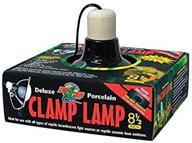

10 Review

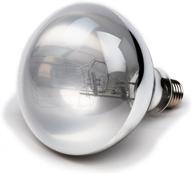

9 Review

Troubleshooting Common Heating Issues
If you notice any of these problems, make adjustments:
- The basking area is too hot - Raise the fixture or lower the thermostat.
- The cool side is too cold - Move the heat source closer or use an additional heat source.
- Temperature fluctuations - Replace bulb, reposition probe, or recalibrate thermostat.
With proper heating your reptile will thrive in their habitat. Let their behavior guide you to make adjustments when needed.
Choosing the Right Heat Source
Selecting an appropriate heat source is one of the most important decisions you'll make as a reptile owner. Reptiles are ectothermic and rely on external heat to power their metabolism and other bodily functions. The right heat source can make all the difference in your reptile's health and happiness.
Heat Lamp Types
Here are some common heat lamp options:
- Incandescent bulbs - Economical option that emits heat and light. Good for daytime heating.
- Ceramic heat emitters - Emits infrared heat but no light. Good 24/7 heating source.
- Halogen bulbs - Produce bright white light and heat. Can be used for daytime basking.
- Mercury vapor bulbs - Provide UVB light and heat. All-in-one daytime lamp.
Choosing Bulb Wattage
The wattage of the bulb determines the amount of heat emitted. Consider the following when selecting wattage:
- Enclosure size - Higher wattages for large enclosures
- Desired basking temp - 75-100W for most small enclosures
- Species needs - Higher heat for desert species
- Bulb distance from basking area - More heat if further away
Heat Mats and Panels
Under tank heat mats or heat tape provide isolated belly heat. Great for species like:
- Corn snakes
- Boa constrictors
- Ball pythons
- Leopard geckos
Ensure heat mats only cover 1/3 of tank floor to create a thermal gradient.
Heating Elements
Other heating options like ceramic heating elements can be used instead of light bulbs. Good for amplifying heat in large enclosures.
Multiple Heat Sources
You may need both overhead heating and belly heat for optimal temperature gradients. Combinations like:
- Basking bulb + heat mat
- Ceramic heater + halogen daylight bulb
Regulating Temperature
Use thermostats and thermometers to maintain proper temperature ranges in the enclosure:
- Thermostat - Automatically controls heating device
- Thermometer with probe - Measures temperature of basking area
- Infrared thermometer - Checks surface temps of heat sources
Choosing the optimal heat source takes some research and fine-tuning. But it is essential for providing your reptile with a habitat that meets their biological needs.
Getting the Temperature Just Right
Providing proper temperatures is crucial for your reptile's health. Reptiles are ectotherms and cannot produce their own body heat. The environmental temperature of their enclosure must match their preferred optimal temperature zone (POTZ). Here's how to get your temperatures just right.
Know the POTZ
A reptile's POTZ depends on the species. For example:
- Bearded dragons - 85-100°F
- Leopard geckos - 88-92°F
- Ball pythons - 88-96°F
Research the ideal POTZ for your specific reptile.
Create a Thermal Gradient
The enclosure should have a "hot side" and a "cool side" to create a thermal gradient. Shoot for these temps:
| Area | Temperature Range |
|---|---|
| Basking spot | 90-110°F |
| Warm side | 80-90°F |
| Cool side | 70-80°F |
Measure Temperatures
Use digital thermometers to monitor temps. Place probes:
- Under basking spot
- On warm side substrate
- On cool side substrate
An infrared thermometer can check basking surfaces.
Adjust Heat Sources
To raise temperatures:
- Move heat lamp closer or use higher wattage bulb
- Increase thermostat setting
- Add a supplemental heat source
To lower temperatures:
- Raise heat lamp height or use lower wattage bulb
- Decrease thermostat setting
- Add more ventilation
Maintain Proper Nighttime Temps
Reptiles need a nighttime temperature drop. Lower temperatures by:
- Turning off overhead heating at night
- Using a lower wattage ceramic heat emitter at night
- Adjusting thermostat to drop temps
Monitor enclosure temps daily. Adjust when needed to provide your reptile with their ideal temperature range.
Positioning the Heat Source Properly
Proper positioning of heat sources is imperative for creating the optimal temperature gradients and basking areas in your reptile's enclosure. Poor placement can lead to "hot spots" that can burn your reptile. Follow these positioning guidelines for best results.
Heat Lamps
For overhead heating, it's best to place the heat lamp at one end of the enclosure. This will create a warm side and a cooler side for proper thermoregulation. Here are some tips:
- Mount the lamp over the designated basking area using a reflector dome fixture.
- Place the basking area lamp 12-18 inches above the substrate for most enclosures. For tall vivarium, 24-36 inches.
- Angle the lamp to concentrate heat on the basking spot. Use a 50-100W bulb for most small to medium enclosures.
Under Tank Heaters
Undertank heat mats provide isolated belly heat. Follow these guidelines when placing:
- Adhere directly to the glass or plastic bottom of one side of the tank.
- Heat mat should cover only 1/3 of the tank floor to allow for a heat gradient.
- For a 10-20 gallon tank, use an 8-12 inch UL-approved heat mat rated for your size tank.
Avoiding "Hot Spots"
To prevent overheating:
- Do not place heat sources too close to any surfaces or substrates.
- Add spacer between heat mats and tank.
- Use rock or bone/slate tile substrate directly under heat lamps.
Example Setups
Here are some examples of proper heat source positioning:
Leopard Gecko
- Heat mat under 1/3 of tank floor on one end.
- 50W basking bulb over slate tile at same end, 10 inches above substrate.
Bearded Dragon
- Basking light mounted 18 inches above basking platform.
- Tube UVB light mounted same distance from mesh top.
- Ceramic heat emitter suspended centrally overhead.
Ball Python
- UTH covering 1/3 of back side of glass tank bottom.
- 50W incandescent bulb over screen top above UTH.
Optimizing heat source placement requires some trial and error. Monitor temperatures daily and make adjustments as needed to maintain your reptile's ideal thermal gradients.
Using a Thermostat for Precise Temperature Control
A thermostat is an essential piece of equipment for regulating heat sources and maintaining proper temperatures in your reptile's enclosure. Here's how thermostats work and why they are so important for reptile health.
What a Thermostat Does
A reptile thermostat has three main components:
- Temperature probe - senses air or surface temperature
- Control unit - allows setting desired temperature
- Power outlet - switches heating device on/off
The thermostat turns the heater on when the temperature drops below the set point. It turns it off when it rises above the set point. This keeps the temperature within the desired range.
Benefits of Using a Thermostat
Thermostats provide:
- Precise temperature control - Maintains steady and consistent temperatures.
- Safety - Prevents dangerous temperature spikes that can harm reptiles.
- Convenience - Automatically adjusts heating so no need to manually switch on/off.
Typical Setup
A typical setup looks like:
- Plug heat source (mat, lamp) into thermostat outlet.
- Place thermostat probe in enclosure near heat source.
- Set thermostat to desired temperature for that area.
The thermostat will now power the heating device on and off automatically to maintain the set temperature.
Tips for Proper Use
- Ensure the thermostat is rated for the wattage of the heating device.
- Mount probe securely using clip - avoid loose bedding contact.
- Set thermostat few degrees above desired temperature.
- Pick thermostat with precise 1-degree control.
Using a quality thermostat is one of the best investments you can make for regulated, safe heating in your reptile's habitat.
Troubleshooting Common Heating Issues
Maintaining proper temperatures in your reptile's enclosure is crucial, but problems can arise. Here are some common heating issues and troubleshooting tips.
Fluctuating Temperatures
If enclosure temperatures fluctuate outside the proper range, it could be caused by:
- Thermostat malfunction - Test thermostat calibration or replace unit.
- Heating device failure - Replace bulb or heater.
- Low ambient room temperature - Raise heat levels in room.
- Drafts - Redirect AC vents and move enclosure away from windows/doors.
Overheating
If certain areas are too hot, it's likely due to:
- Heat source too close - Raise fixture height or wattage.
- Inadequate thermostat - Get higher wattage or upgrade type.
- Hot spot - Add a cage decoration to diffuse heat.
No Heat on One Side
If one side is too cool, try:
- Moving heat source closer to that area.
- Using a secondary heat source for that side.
- Using higher wattage heat emitter.
Burned Out Heat Sources
Frequent bulb or heater burnout could be from:
- Incorrect wattage - Use wattage recommended for enclosure size.
- Old bulb - Replace incandescent every 6 months.
- Frequent on/off - Add a thermostat.
- Moisture damage - Improve ventilation.
No Heat
If there is suddenly no heat in the enclosure:
- Check electrical connections.
- Test outlets with a meter.
- Replace burned out bulbs/mats.
- Reset thermostat breaker if tripped.
Prevention
To prevent many heating problems:
- Use thermostat and quality thermometers.
- Select proper wattage heat devices.
- Replace old bulbs regularly.
- Ensure tight fixture connections.
Troubleshoot heating issues promptly to restore proper habitat temperatures as soon as possible.
What is the benefit of Amazon Prime when buying "Terrarium Heat Lamps & Mats"?
Amazon Prime provides a number of benefits that can be very helpful when shopping for terrarium heating products like heat lamps and mats. Here are some of the main perks Prime members enjoy.
Free Two-Day Shipping
One of the biggest Prime benefits is access to free two-day shipping on millions of eligible items. This means you can order your reptile heat lamp, under tank heater, thermostat, and other accessories and receive them quickly without paying extra shipping fees.
Having Prime can be especially helpful if you need to replace a burned out bulb or malfunctioning heat mat quickly to restore proper temperatures in your terrarium.
Free One-Day Delivery
On select products, Prime members in certain areas can even get free same-day and one-day delivery. So if you need a heat source urgently, be sure to check for this option during checkout.
Free Release-Date Delivery
You can pre-order newly released terrarium heating products like innovative ceramic heat emitters or WiFi-capable thermostats and have them delivered on the release date for no additional charge.
Access to Lightning Deals
Prime members get 30 minute early access to limited time Lightning Deals. This lets you jump on heated sales for reptile heating essentials. You can sometimes save up to 20-30% on top brands of terrarium heat lamps, under tank heaters and thermostats with Lightning Deals.
Setting up alerts for Lightning Deals on items you need can help you save big. Prime's free fast shipping also makes grabbing time-limited deals easier.
Streamlined Returns
Prime provides free return shipping, so if a heat lamp arrives broken or a heat mat is the wrong size, you can easily send it back at no cost and with minimal hassle.
So if you frequently shop on Amazon for terrarium heating supplies, a Prime membership can often provide convenience, savings, and peace of mind.
How To Choose The Right Heat Lamp For Your Terrarium??
Choosing the right heat lamp for your terrarium is crucial for the health and wellbeing of your reptile or amphibian. Here are some tips to help you choose the right heat lamp:
What Are The Differences Between Incandescent Bulbs, Incandescent Spots, And Mini-Halogen Bulbs For Terrariums??
Here are the differences between incandescent bulbs, incandescent spots, and mini-halogen bulbs for terrariums:
Incandescent bulbs:
Incandescent spots:
Mini-halogen bulbs:





